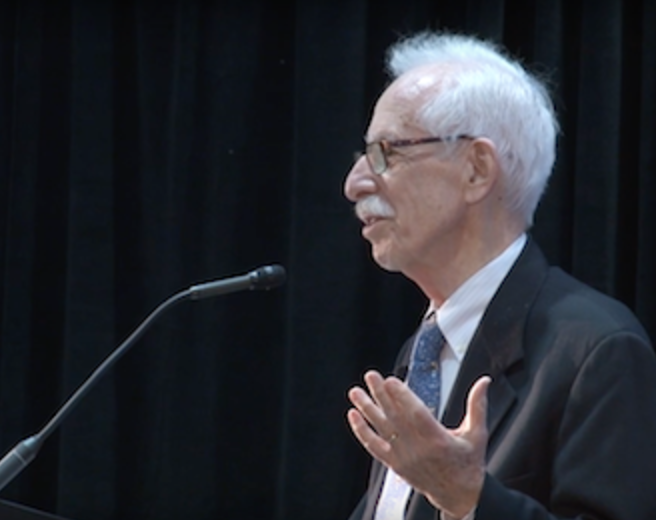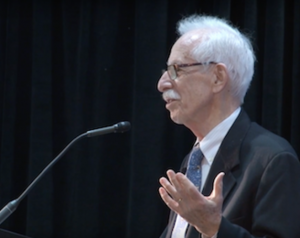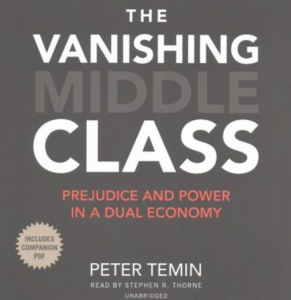
Fundamental mistake of the American Dream: Vanishing middle class

Peter Temin, an eminent professor Emeritus of economist at MIT offers an illuminating way to view vanishing middle class as the United States is becoming a nation of rich and poor, with few families in the middle.
“The middle class was critical to the success of the United States in the twentieth century, as they provided manpower that succeeded in turning the corner to victory in two world wars in the first half of the century, and the middle class was also the backbone of American economic dominance of the world in the second half. But now growing inequality is threatening the American middle class which is vanishing before our eyes. It has lost almost a third of its share of America household income since 1970s”.
This book looks into the growing disparity of incomes between rich and poor, as the history and politics of America have a lot to do with the way the increasing equality have been distributed. The US trouble racial history of slavery and its aftermath also play a dominant role in how this growing divide is seen.
Americans who tend to think that history marches forward and that their children will do better than they did, This is the fundamental mistake of the American Dream.
As America grew richer, the gains from its growth have not been shared. The US economy amassed $18 trillion worth of goods and services in 2016, much more than any other country in the world. Between 1980 and 2014, pre-tax income grew, on average, by 61 per cent, yet most of these gains went to those at the very top. For the bottom 50 per cent of the US population incomes grew only by 1 per cent, while the top 1 percent snagged 205 per cent income growth.
This is not the way the true great American Dream was expected to pan out. Rising inequality and the failure to distribute the gains from economic growth make today the United States look like a developing economy. Peter Temin builds on the dual sector model developed in the 1950s by W Arthur Lewis, who looking at developing economies, proposed that economic growth and development did not conform to national boundaries. He saw economic progress was not uniform buy spotty.
Lewis calls one sector capitalist is the home of modern production, where development is limited only by the amount of capital. The other sector which he calls subsistence is composed of poor farmers who supply a vast surplus of labour. In these two sectors symbiotic relationship the capitalist sector seeks to keep wages down to maintain an ongoing source of cheap labour. Temin argues that the vanishing middle class has left behind a dual economy and his dual sectors are finance, technology and electronics or FTE akin to Lewis’s capitalist sector – and low-skill work, akin to the susbsitence sector, whose workers bear the brunt of vulgarities of globalisation. This booke reveals how the members of the FTE sector seek to keep their own taxes low and supress the wages they pay so as to maximise their profits. Mass incarceration, housing segregation and dis enfranchisement all help to keep the low-skill sector in a subservient labour market position. These developments also play out along racial lines set by the nation’s history of slavery.
The bridge between the two sides of economy is education. There are paths for children of low-wage families to get into the richer FTE capitalist group, but Temin argues that there are still many more obstacles, especially for children from African-American families.
The Vanishing Middle Class: Prejudice and Power in Dual Economy by Peter Temin, MIT £21.95/$26.95

